On another hot and muggy day, with thunderstorms promised later, we planned to visit five gardens near the Cathedral, opening for charity under the National Garden Scheme. They didn’t open until 1pm so we browsed around St James’ Garden until then. The site was a quarry in the 1700s, and the stone was used for many of Liverpool’s 18th century buildings. Between 1825 and 1936 it became Liverpool’s main cemetery and is now a public park. The Anglican Cathedral towers overhead. In the centre is the domed Huskisson Monument, commemorating William Huskisson 1770-1830, MP for Liverpool and the first person in the world to be killed by a passenger steam locomotive during the Rainhill railway trials won by the Rocket.
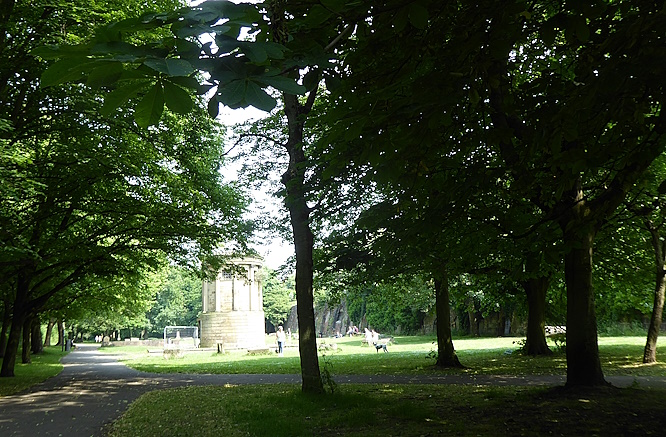
At the northern end are some early graves of mariners, including some American sea captains. One was for Captain William Wildes, born Arney Town, New Jersey who died 1835 and here is Captain Elisha Lindsay Halsey of Charleston, South Carolina.
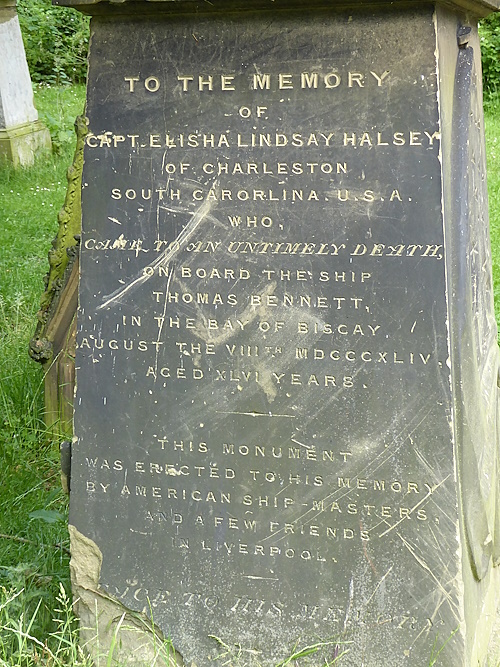
There was a Wood Pigeon on a nest in a Weeping Ash, and a Blackbird on the path with a worm in its beak. The rough edges contained a variety of wild flowers, including this clump of Feverfew.
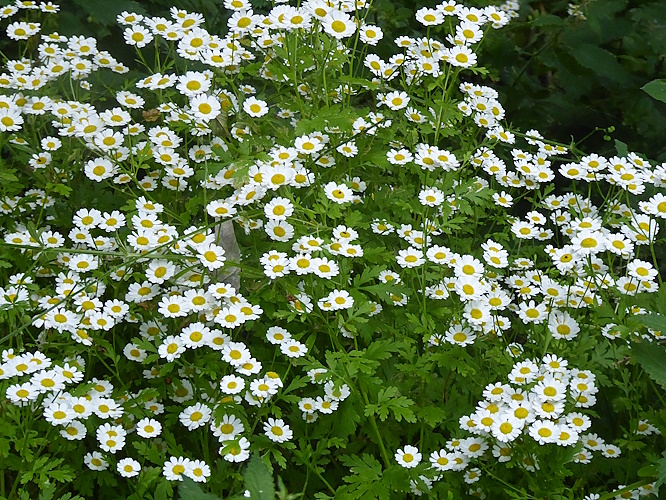
The gardens are now much less “managed” then they used to be, with lots of thickets of Bramble and Nettle. We saw the obvious benefits to wildlife, including sightings of several Large White butterflies, our first Red Admiral of the year and two Speckled Woods.

The Lime trees were flowering and full of aphids, which were supporting a large number of ladybirds and their larvae. We also saw a tiny orange one, only 3-4mm with many spots. I think it was the 24 Spot Ladybird, which rejoices in the Latin name Subcoccinella vigintiquattuorpunctata. It lives on grassland and meadow and is widespread but not particularly common. Our star insect was a bright copper-coloured beetle with a green head, about twice the length and width of a ladybird. Later identified as a Garden chafer, Phyllopertha horticola.
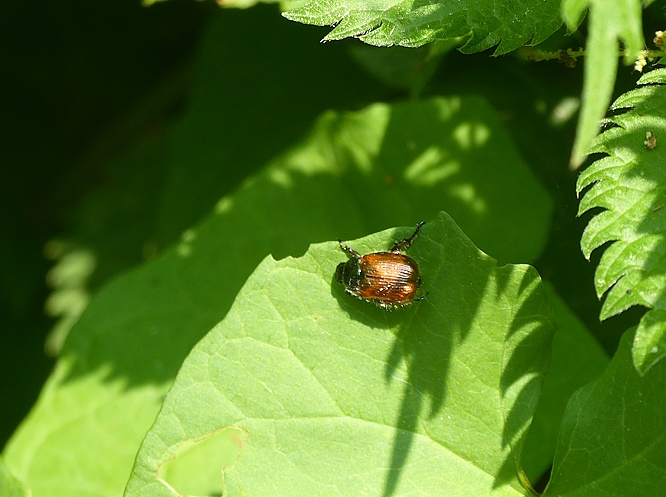
After a brief rain shower we headed off to the open gardens. On the wall of the oratory was a bright red plant. Is that Shining Cranesbill? No, the red colour doesn’t make it “shining”. The shape of the leaves means it is common Herb Robert. When it grows in dry exposed places, such as in crevices in walls and stone bridges, the leaves and stems turn red during dry weather.
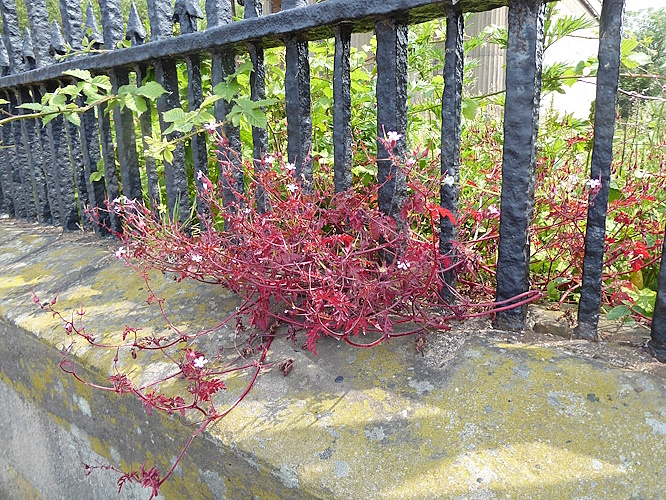
Our first open garden was at 27 Canning Street, a small north-facing walled garden. The owner had lots of espaliered apple trees, a Morello cherry, a fig, and a grapevine. The rest of the space is planted with herbs and spices and some more unusual plants such as Woad and the Turk’s Cap Lily.
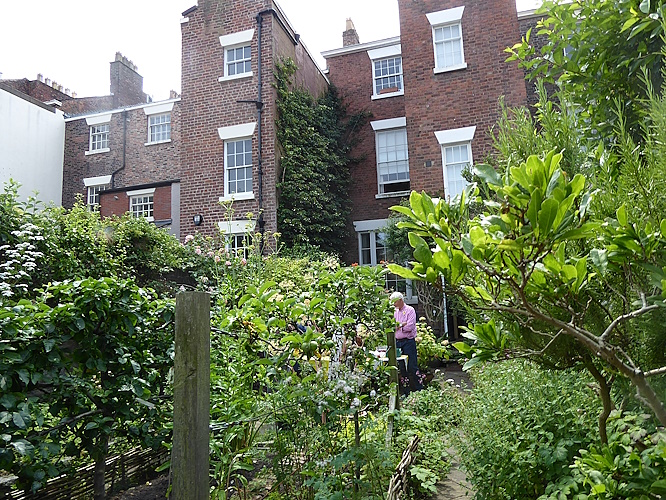
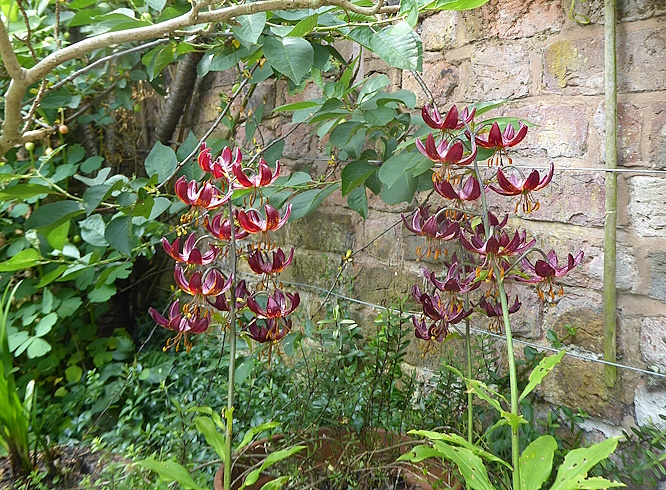
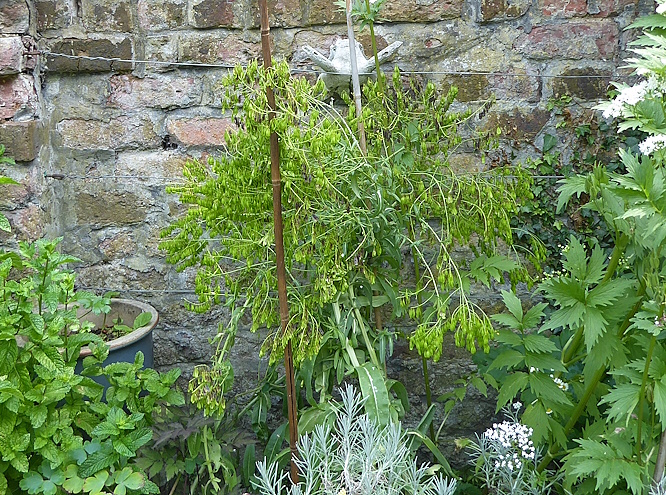
In Back Canning Street another homeowner had made a lovely “doorstep” garden, and we spotted our second Red Admiral butterfly of the day. Like the first, it was smart and bright, but flying rather confusedly. Newly-emerged?
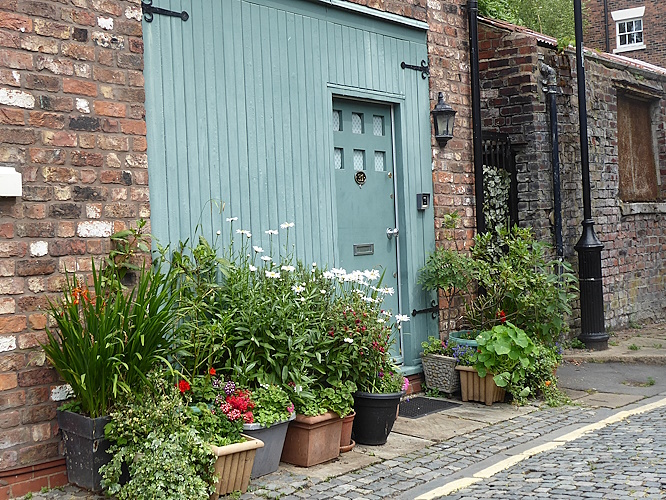
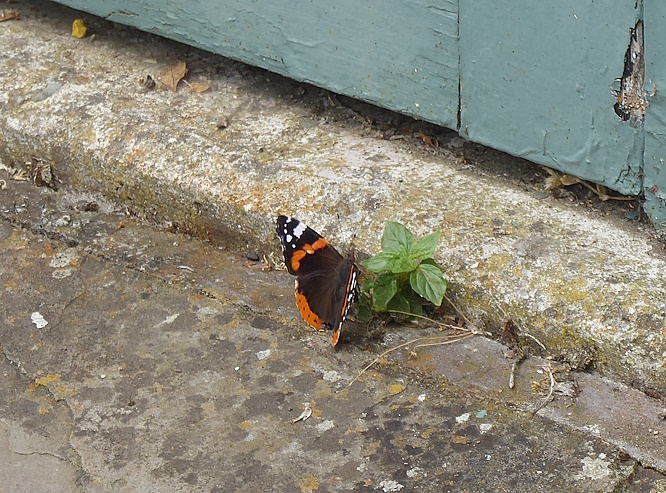
The second garden was ‘El Jardin de la Nuestra Senora’, the garden of Our Lady, next to St Philip Neri RC church on Catharine St. It is a Spanish-style garden created in the 1950s and is rarely open to the public. We noted the Tree of Heaven as an appropriate planting for a religious garden, and also the lovely roses.
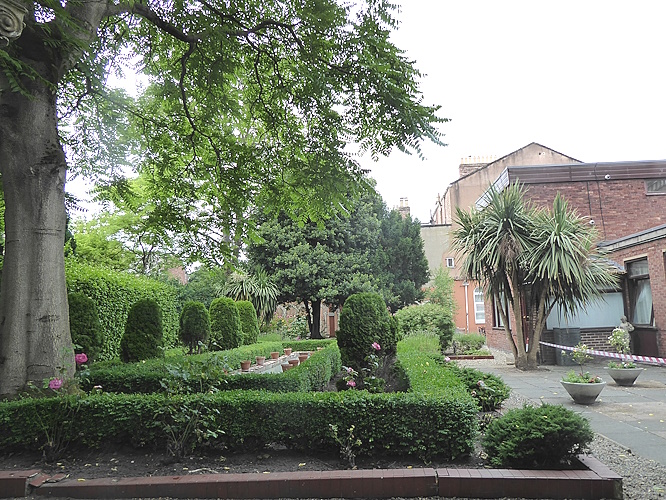

Then we went to The Grapes Community Food Garden in Windsor Street. It has been developed over the last 10 years by local residents and community members, who grow a large variety of fruit trees and bushes, herbs, vegetables and flowers and run weekly gardening and cooking sessions. Their greenhouse was a marvellous domed affair.
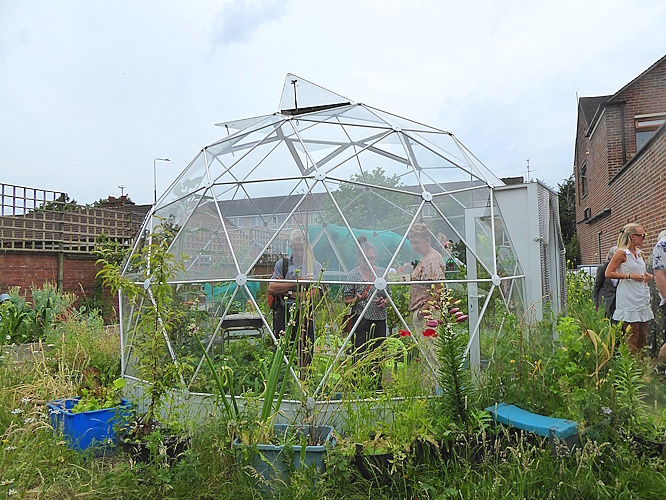
Further down Windsor Street was The Squash Café Garden. The café is a community-designed eco building and they have a garden behind it where they grow produce for their menu. Their piece in the NGS leaflet mentioned “raised and moveable beds” which turned out to look something like supermarket trolleys. What a good idea! One was full of strawberries.
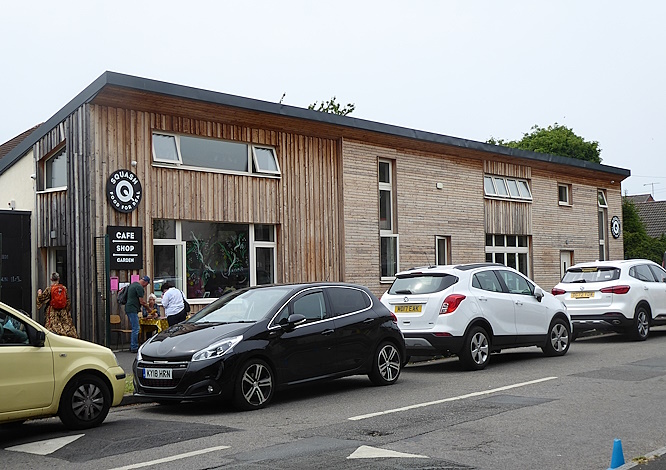
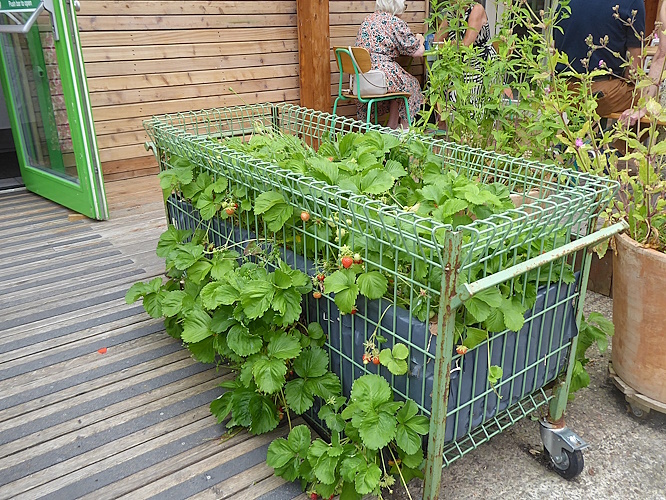
Finally, we crossed Princes Avenue to the Pakistan Association Liverpool Wellbeing Garden, right next to the Mosque on Mulgrave Street. It is the front garden of the community centre, described as “a beautiful inspirational space for the members to enjoy, grow vegetables, herbs and flowers”. Their Sweet Peas were lovely.
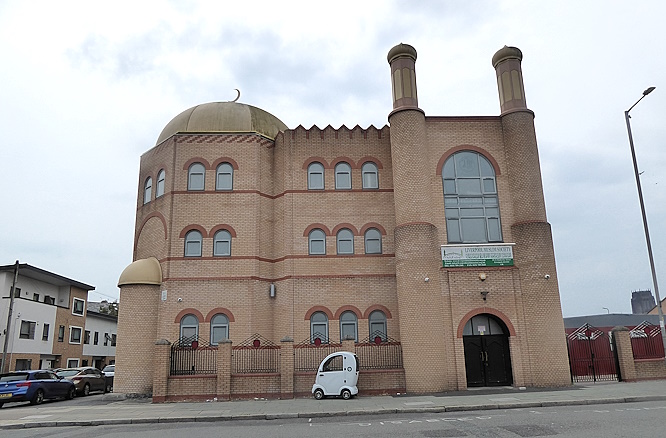
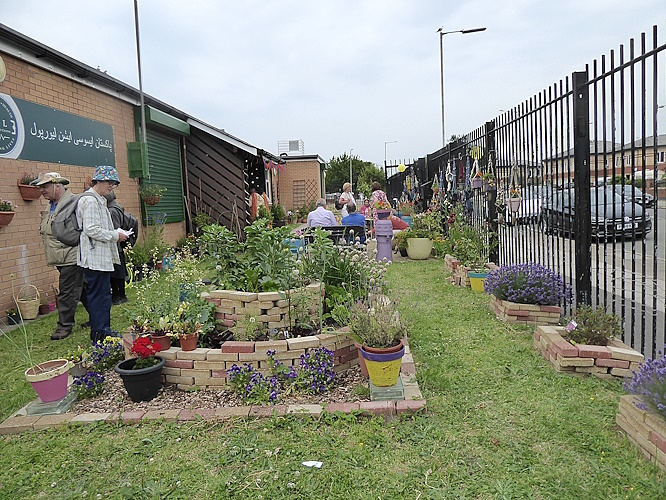
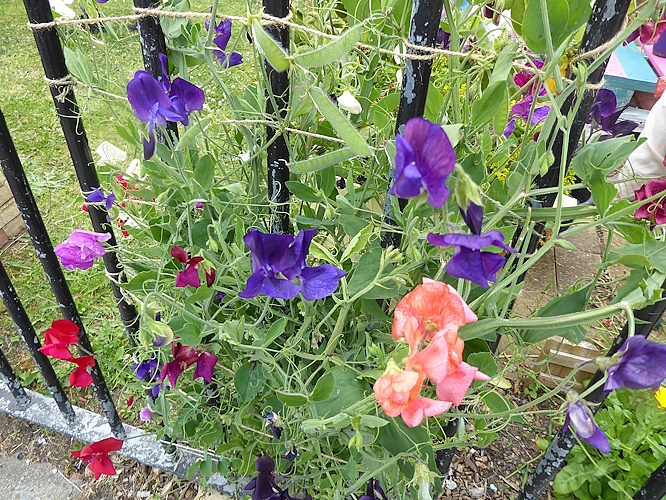
We were all quite tired by then. It felt like a long slog in the heat of the afternoon, but it was probably only about 2 ½ miles. We were happy to set off home, about an hour later than usual.
Just to add, I found a lovely moth roosting on my shed in the week, well-camouflaged on the old wood. It’s probably a Grey Dagger, Acronicta psi. It’s a medium-sized moth about an inch (2.5 cm) long. The ID guides say “Without close examination the Grey Dagger is indistinguishable from the Dark Dagger and identification is generally only possible by minute examination of the genitalia.” However, the Grey Dagger is commoner north of the Midlands.
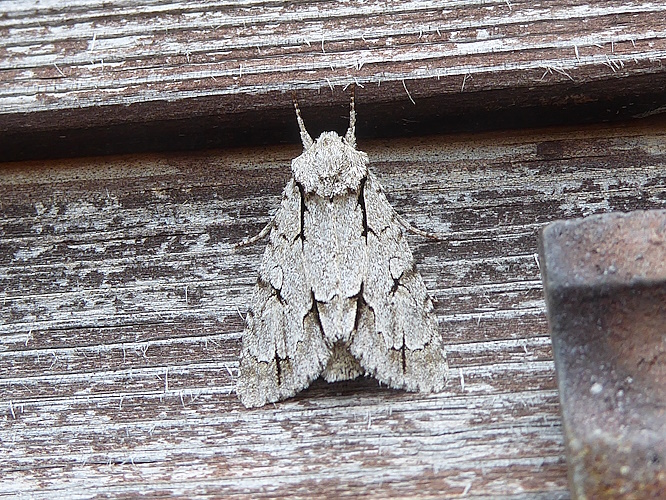
Public transport details: Bus 82 from Elliot Street at 9.55, arriving 10.02 at Great George Street / Upper Duke Street at 10.02. Returned on the 86A from Upper Parliament Street / Mulgrave Street at 3.30, arriving City Centre 3.40.
